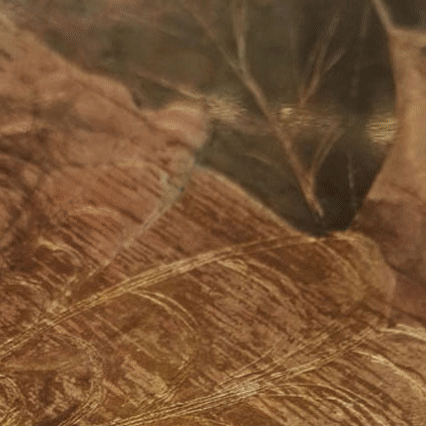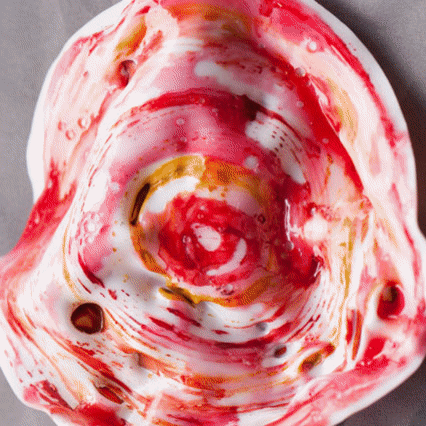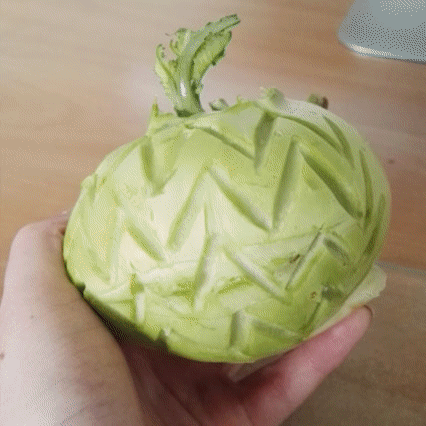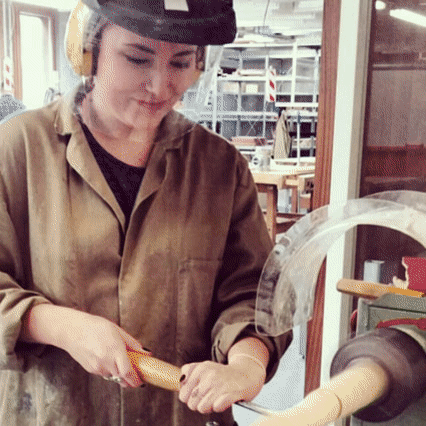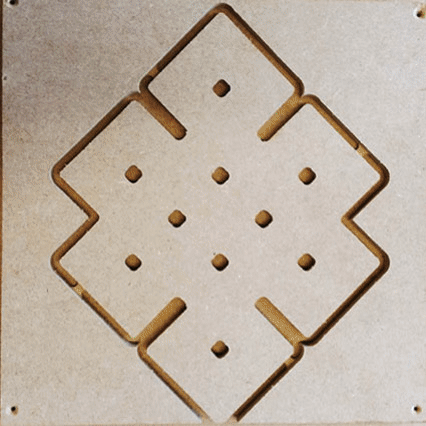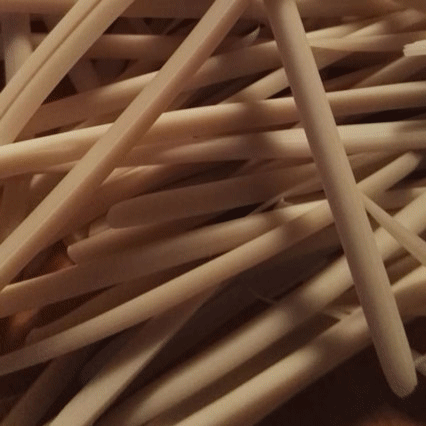User:Simonevdw
Making is connecting Simone van de Werken - 0894623@hr.nl
Contents
Notes on texts
The meaning of making: philosophies of craft
What is craft?
Craft might suggest the careful work of a woodcarver of ceramicist, a skilled practice of making beautiful objects. The term might be associated with traditional and rather twee items wich you might have seen on sale at craft fairs, or it might suggest a newer, cool approach to making things yourself, as seen in the recent rise of knitting, craft fairs, DIY culture, and other trendy craft activities. The term ‘craft’ is further complicated by its relationship with art. Somehow the concepts are still separate:
Art tends to mean the truly creative transformation of ideas and emotions into visual objests. Craft having been shoved out of that space – ends up indicating the less prestigious production of carving or pots, by less creative people who just like doing it.
People see art as superior, and instead to regard its stance as unnecessarily pretentious and exclusive, and therefore rather silly, in comparison to the more earthy, engaged spirit of craft. There is still, of course, the problem that this may not be the majority or dominant view.
John Ruskin
Ruskin was extremely prolific. He is remembered primarily as an artist and art critic, and as a social thinker, but he also produced poetry and fiction, and wrote about architecture, geology, literature, science, and the environment. It is his ideas about art and society, and his critique of the dehumanized model of industrial production which we will focus on here. John Ruskin was not a central participant in the Arts and Crafts Movement, English or American, but was an inspirational harbinger of its coming and a major influence on its proponents. For example, William Morris, often called the father of the Arts and Crafts Movement, admired Ruskin and was strongly influenced by his writings and social commentaries. Years after being introduced to Ruskin's works, Morris recalled it and stated, "To some of us when we first read it, now many years ago, it seemed to point out a new road on which the world should travel."
In truth, the mid 19th century writings of John Ruskin laid the foundations for many of the craftsman style values of the Arts and Crafts Movement. His writings predicted and commented on social issues such as environmentalism, sustainability, craftsmanship, and fulfilling labor. Most importantly for the Arts and Crafts Movement to come, Ruskin called for a revival of traditional craftsmanship and a return to the spiritual values of handcrafting from natural materials.
Two of his most influential works, The Seven Lamps of Architecture (1849) and The Stones of Venice (1851-53, a trilogy), addressed the subjects of nature, art, society, and skilled craftsmanship, and attacked division of labor (industrialized workforce specialization) and industrial capitalism. Such topics are truly close to the heart of the Arts and Crafts Movement.
William Morris
It was this emphasis on the power of individually crafted work which caught the attention of the young William Morris. As we have seen, this approach, suggested by Ruskin, is not (simply) a celebration of individualistic ‘making things’ but rather has profound social implications. Like Ruskin, he felt that workers should be able to take pleasure from making beautiful things from the finest materials.
Interesting point for my research: The notion that one arm of science and technology should be used to fix the environmental degradation caused by the other arm remains controversial, but Morris was 140 years ahead of the current debates.
The artist should be humble, engaged with the everyday, and willing to make things themselves – to get their hands dirty, as it were. As Morris puts it: ‘The best artist was a workman still, the humblest workman was an artist.
The invention of craft
Craft's has a reputation as something that has always been with us. People have always been making things, from this perspective craft is intrinsic to what it is to be human. Industry is the more steady performance of this. Industry is seen as a tide of depersonalization. That is why some people believe we have to go back to the times of craft, were products were made in special ways and its organic role in society. This is the usual way of looking at it.
This text says that craft itself is a modern invention. It is something that came with the industrial revolution. Craft was not a static backdrop against which industry emerged like a figure from the ground. Rather the two were created alongside each other. Artisans were drummed out of work by machines, with tragic consequences for the experience of the maker and the quality of the things they produced. William Morris had ideas based on the philosophy of John Ruskin and Karl Marx, were formative to an international craft revival to undo the pernicious effect of industrialization. Morris and his followers saw themselves as the people that would help to restore the position of craft mans to their historical place so they would be masters of there own hands again.
There is just as much willful blindness among the craft reforms as their opponents.
Acceptera craft
We often believe there to be an important difference between handcraft and industry in the character and sentimental value of their products. We then readily equate handcraft with the handmade and industry with the machine-made. It is obvious that this is not correct.
We judge a product on the following way: is it handmade of machine made? Is it beautiful is it ugly? Is it good or bad quality? We are undoubtedly influenced by the change in opinion toward the outcomes of industry and handcraft that was propagated by Ruskin and Morris during the second half of the 19th century. Handcraft became a competition for the industry. Ruskin believed about craft that only handcrafted methods were fit for human beings, and only handcraft could create harmonious individuals. People thought industrial stud looked cheap, and people did not want cheap stuff in their homes.
This was a false generalization, both machines and human hands can produce high quality goods. We often still attempt to give factory goods the appearance of handcrafts. This is is then often called ‘antiques’. The production of ‘oriental’ objects has gone the same. If you travel you will be able to buy factory made crafts. Costumers value quality, so they make imitations.
Is there a dividing line between industry and handicraft? Working with hands and the use of machines alternates in both handicraft and industrial production. The use off machines tells nothing about whether a enterprise should rightly be classified as industry or handicraft.
What is industry then? The industrial process involves, as a rule, the production of a series of standardized, interchangeable parts assembled as units trough the rational decision of labor with as few different actions performed by hands as possible.
What is handicraft? Handicraft is usually executed on commission and cater to a relatively small group of costumers. They attempt to satisfy the specific desire of individual purchasers. They generally produce unique objects, which differ from each other in their dimensions, form and use.
You can divide all goods in everyday needs and luxuries. But for every person this will be different. Off everyday house hold goods we think for example: they should be affordable and useful. We want to create objects that we can both feel attachment to and work well and beautifully. The obvious task for everyday things is to be of service. But we have shown more interest in appearance then efficiency. In this way the general public’s interest in good form has needs linked to goods intended for ostentatious display. Industry is not a place for making unique objects, handicraft is. Industry will make functional products
Why i am not a maker
Every once in a while, I am asked what I “make.” A hack day might require it, or a conference might ask me to describe “what I make” so it can go on my name tag. I’m always uncomfortable with it. I’m uncomfortable with any culture that encourages you take on an entire identity, rather than to express a facet of your own identity ("maker," rather than "someone who makes things"). But I have much deeper concerns. An identity built around making things—of being “a maker”—pervades technology culture. There’s a widespread idea that “People who make things are simply different [read: better] than those who don’t.” Making is not a rebel movement, scrappy individuals going up against the system. While the shift might be from the corporate to the individual (supported, mind, by a different set of companies selling a different set of things), it mostly re-inscribes familiar values, in slightly different form: that artifacts are important, and people are not.
I feel like i can identify with the article ‘Why I Am Not A Maker’ by Debbie Charchra. Maybe because i am studying to be a teacher just like she is. Most of the time i feel like i am more of an instructor than an actual maker.
Tools for change
We have considered the qualities of ‘making things’ and have found, amongst other things, that individually crafted items are expressive of a personality, and of a presence in the world; that everyday creativity is central to the health of a society; and that making and sharing your own things, rather than accepting mainstream manufactured or broadcast things, is positive in both political and emotional terms. The text says that the problem with schools is that they don't learn people how to think for themselves enough. They will make people believe that they are unable to do things for them selfs, which is untrue. This creates a double problem for the poor, who already experience a lack of power over their circumstances, but then, in addition, are schooled into a way of thinking which represents ‘a loss of personal potency’. They feel like there needs to be a new kind of schooling were people will learn things that they want to learn about.
A good educational system should have three purposes: it should provide all who want to learn with access to available resources at any time in their lives; empower all who want to share what they know to find those who want to learn it from them; and finally, furnish all who want to present an issue to the public with the opportunity to make their challenge known.
So conviviality is about being vigorously engaged in relationships, conscious of values and meanings; and it is about having the capacity to communicate yourself directly, and to create the things of your world yourself. Conviviality is therefore also represents the joyfulness with is so easily lost into systems and institutions nowadays.
Experiments
Etching
Etching is traditionally the process of using strong acid or mordant to cut into the unprotected parts of a metal surface to create a design in the metal. I really wanted to try this method for a pretty long time, and i thought now was the perfect opportunity. It is a method of print making, but i feel like the copper plate itself is already very special. I love how the plates of old master pieces often still exist because the material will last very long.
History of the technique:
The process as applied to printmaking is believed to have been invented by Daniel Hopfer (circa 1470–1536) of Augsburg, Germany. Hopfer was a craftsman who decorated armour in this way, and applied the method to printmaking, using iron plates (many of which still exist). Apart from his prints, there are two proven examples of his work on armour: a shield from 1536 now in the Real Armeria of Madrid and a sword in the Germanisches Nationalmuseum of Nuremberg. An Augsburg horse armour in the German Historical Museum, Berlin, dating to between 1512 and 1515, is decorated with motifs from Hopfer's etchings and woodcuts, but this is no evidence that Hopfer himself worked on it, as his decorative prints were largely produced as patterns for other craftsmen in various media.
The switch to copper plates was probably made in Italy, and thereafter etching soon came to challenge engraving as the most popular medium for artists in printmaking. Its great advantage was that, unlike engraving where the difficult technique for using the burin requires special skill in metalworking, the basic technique for creating the image on the plate in etching is relatively easy to learn for an artist trained in drawing. On the other hand, the handling of the ground and acid need skill and experience, and are not without health and safety risks, as well as the risk of a ruined plate.
What i did:
Before i started i had to prepare my plate. I had to use fine steel wool and a piece of cloth and rub copper oil on to the plate till the surface was super shiny and smooth. With a hand file i beveled the edges of the plate. This is because otherwise the sharp edges can damage the paper when it goes trough the press. After that i degreased the plate. I did that with soy sauce and a piece of spunge. Then i washed the plate under running water, and put it in an oven for a few minutes to dry.
I first tried the basic method. I used wax to cover the plate, baked it in the oven and scratch that off. Then i had to soak the plate in acid so it was engraved because the parts that are not covered with wax will dissolve. I also used the dry needle / drypoint technique. This technique is closer to using a pencil than the other one is. The technique appears to have been invented by the Housebook Master, a south German 15th-century artist, all of whose prints are in drypoint only. Among the most famous artists of the old master print Albrecht Dürer produced 3 drypoints before abandoning the technique; Rembrandt used it frequently, but usually in conjunction with etching and engraving. Any sharp object can theoretically be used to make a drypoint, as long as it can be used to carve lines into metal. I just a nail that i attached to a piece of metal.
After this i off course printed my plate to see if i used the techniques in the right way. I covered the plate in ink and rubbed it in with a flat piece of newspaper. I placed damp paper on a cloth and took this trough the etching press.
Plastic cups
Plastic cups are used a lot in this school for painting, i collected cups that were used for painting so that i could recycle them. I made cuts in them so they would melt down round. I wanted to use them as a material to carve in after i melted them but the material becomes to hard after this.
Fruit and vegetable carving
History of the technique:
The origins of fruit and vegetable carving are not known for sure. Some people believe it started in Japan in ancient times, others believe it to have begun in Sukothai, Thailand 700 years ago, while still others believe that fruit vegetable carving originated in the time of the Tang dynasty (AD 618-906) and the Song dynasty (AD 960-1279) in China.
Regardless of its origins, fruit and vegetable carving is flaunted in many different Asian restaurants, cruises, hotels, and other various places. In the mid 20th Century, the art of vegetable carving began to grow outside Asia. Since then other cultures have slowly come to appreciate the beauty and culture associated with the practice. Today, one can marvel at vegetable carving throughout the world.The products of fruit and vegetable carving are generally flowers or birds; however, the only limit is one’s imagination. The techniques of vegetable carving vary from person to person, as does the final result. Some carvings present more artistic detail, while others have simple, yet beautiful shapes. Vegetable carving is generally used as a garnish, but it can also be used for flower arranging.
The art of fruit carving uses many different tools, usually ordinary items but some specific to just fruit carving. All these tools give the artwork a different texture or help with its design. Some of the tools include:
Pen: to draw on the carving one wishes to make Carving Knife: most commonly used for giving the carving shape Peel Zester: this tool is used to create strips and grooves Melon Baller: can be used for a variety of fruit to add ball shaped fruit carvings to the display U shaped garnish tool: used to cut the outer layer of the fruit. This tool is used for fine detailed work. Many fruit carvers use this tool to create a pedals for a flower shape they are carving. V shaped formed cutter: is used in a similar way as the U shaped garnish tool but for more bigger carving ideas
What i did:
I carved in various fruit and vegetables with a linoleum carving tool. I like the fact that it is something made from an organic material that will not last long. By carving into it it will even be gone sooner. You could spend a lot of time in creating a very beautiful object, that will slowly but certainly disappear afterwards.
Woodturning
History of the technique:
The origin of woodturning dates to around 1300 BC when the Egyptians first developed a two-person lathe. One person would turn the wood with a rope while the other used a sharp tool to cut shapes in the wood. The Romans improved the Egyptian design with the addition of a turning bow. Early bow lathes were also developed and used in Germany, France and Britain. Sometime after the turning bow was developed, a lathe was created that spun when a lever was pumped by hand. Early lathe workers would sometimes use their bare feet to hold cutting tools in place while using their hand to power the lathe. In the Middle Ages a pedal replaced hand-operated turning, freeing both the craftsman’s hands to hold the woodturning tools. The pedal was usually connected to a pole, often a straight-grained sapling. The system today is called the “spring pole” lathe (see Polelathe). Spring pole lathes were in common use into the early 20th Century. Up to this point in history, the lathe operated in a reciprocal manner with the workpiece rotating back and forth as the drive mechanism reset to the loaded position in preparation for the next stroke. This required the turner to alternately apply the tool as the blank spun toward the operator and remove it from the blank as it spun away from him. A two-person lathe, called a “great lathe”, allowed a piece to turn continuously (like today’s power lathes). A master would cut the wood while an apprentice turned the crank on a huge wheel, often several feet in diameter.
During the industrial revolution the lathe was motorized, allowing turned items to be created in less time. The motor also produced a greater rotational speed for the wood, making it easier to quickly produce high quality work. Today most commercial woodturning is done by computer-operated machinery allowing for mass-production that can be created with precision and without the cost of employing craftsmen. Modern professional woodturners are typically either “production” turners producing large quantities of functional pieces, or artistic turners producing smaller numbers of pieces, often enhanced after turning by carving, piercing, coloring, applying pyrography, gilding, or a number of other techniques to produce objects for the art market. From the 1930s, the field of wood turning grew from this hobbyist movement in the 1930s to fine artists in the 1970s, experimenting with super object forms and other fine craft concepts. The Center for Art in Wood, founded in 1986 as The Wood Turning Center, houses a collection in Philadelphia with over 1,000 objects from international artists as well as a research library and gallery.
What i did:
Together with Astrid I went to the wood station. We did not know how to use the wood turn machine so we asked for explanations about how we could use the machine. The supervisor helped us understand the workings of the machine and explained the safety rules to us. Furthermore he taught us some techniques and the best workposture for applying pressure to the tools. We used a piece of hard whitewood and found that it was very difficult to get the right finish because the nerve was sideways. This resulted in a rugged surface and made us see that its better to use a different kind of wood.
Workshop milling machine
Before we started working with the milling machine we made a design for it. I worked together with Astrid because we could only attent one of the two days. We used a design prepared in Adobe Illustrator and thought it would be a good challange to produce this with the milling machine. The design consisted of several lines which was not possible to produce with the milling machine in one go. The design had to be adapted to consist of 1 contour line because it is a 2d design. We decided to make two seperated parts that could fit in to each other. We worked with Vcarve pro.
Final project
For my final project i combined one of my personal interest with an observation i made while teaching art: a lot of material gets wasted. I try to be conscious about the environment and making now a day making involves a lot of plastic materials. I like reusing materials for my own work and with linoleum cutting in my class there is so much material that gets carved out and gets thrown away. It is a material that gets used so often in schools, and is seen as boring a lot of times. I want to do something new with it. I tried to melt in in a lot of different ways and it was very interesting to see how the material changed. I ironed it, microwaved it, put it in the oven, a frying pan and melted it with a lighter. Every way smelled really bad and was probably bad for my health to so that is why i decided to buy a good mask to continue this process. Every way worked and made the material reusable, but it also made the material look very ugly. It is for the fact that plastic melting is not without dangers that i would not recommend everyone to do it at home, but from every carved piece i could create a reasonable sized piece that could be used again. It only became flat when i put an other item on top of it while i was melting it. The flatness of the piece is very importent while printing even though it gives a nice unpredictability to your prints to have a bit of a rough surface that is bubbly from the heat.
Why i make
I am from the fine arts & design teacher department, and choose to do digital craft as my first practice because I wanted to do more in the different stations and explore more techniques. At our study we are learning how to teach drawing, painting, handcrafts, textiles, be skilled in digital culture, cultural and artistic appreciation, visual design and general art. Or at least that is what the description of the study says on the website of the Willem de Kooning when you apply. It is a lot to learn in four years, and even though its all art related they are different things and sometimes I really feel like I am not a maker at all. A lot of our time gets taking by the more theoretical aspects and working on our didactics and teaching skills. I know this will get me well prepared for my future profession at a school or cultural institute, but it leaves learning techniques to your own responsibility. Most of the time I feel like I am more of an instructor than a maker. I am not a master at any technique at this point; I know a lot of little bits about lots of things. I have studied graphic design before this and know about some digital things i feel like i do not work enough with my hands. I choose Digital Craft because I was really exited to focus on one technique and try a lot of different things with it. I liked that I got to explore carving because it is not something that I would ever choose myself because 2D techniques are always something i go for. I like being pushed to do things because otherwise I always stick to what I know.
Till the day I started digital craft I had never worked in one of the stations. I want making to play a bigger role in my own education and I wanted to learn more techniques so I can also tell my students about all the different opportunity’s they have when they are making something. I am strongly convinced that getting art education is really important for my students, but for some of those reasons I think it is important for everyone to make and be creative. For students It is important to experience creating and I want them to know that they can do things themselves if they want to and feel free to explore this. For some students art education in school is the only way they will connect to making in a creative and autonomous way. Studies show that art education can help close the gap between socioeconomic groups, creating a more level playing field between children who may not be exposed to these enrichment experiences outside of school and some of their more privileged peers.
Making can be challenging but I can see that however it almost always gives them confidence at the end of the process, and I feel like making also does that for me. For me art meant a great deal in school because I am very dyslexic and it was the only subject that I was very good at since every other class they will teach you in middle schools is focused on languages. reading and writing text. For me thinking in images is just the way my brain works, but it was and is often still seen as a learning disability. Being a maker at that time was very important and I tried to focus a lot on the fact that even though I was not a great student I was a pretty good painter. Luckily for me i figured out how to deal with it now and it is not that big of an obstacle it was when i was younger. But this is why I am not really focused on becoming a maker and I am very content with being an instructor. Because art and making meant a lot for me at that time I also want my students to know that they can do things themselves if they want to. Being creative and going trough a process of making will help them improve visual analysis skills and learn from mistakes and make better critical judgements and often feel better about themselves because they produce. I also feel like they can explore who they are as makers and people in the process. Individually crafted items are expressive of a personality; they have a lot of time and research in them and are special. Making is also a shared experience, they often will have to work together, help each other reflect and connect with others. I like teaching art because i am also part of that shared experience.
For my final project i combined one of my personal interest with an observation i made while teaching art: a lot of material gets wasted. I try to be conscious about the environment and making now a day making involves a lot of plastic materials. I like reusing materials for my own work and with linoleum cutting in my class there is so much material that gets carved out and gets thrown away. It is a material that gets used so often in schools, and is seen as boring a lot of times. I want to do something new with it. For my final artefact I tried to reuse this material and melt it back into a new form. At the final art exhibition I will show different phases of this process.
5 sentence statement
I make to connect people with themselves and others.
I make to become a better teacher.
I make to solve problems.
I make to reuse.
I make to connect with myself.
